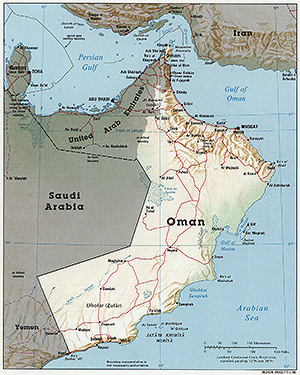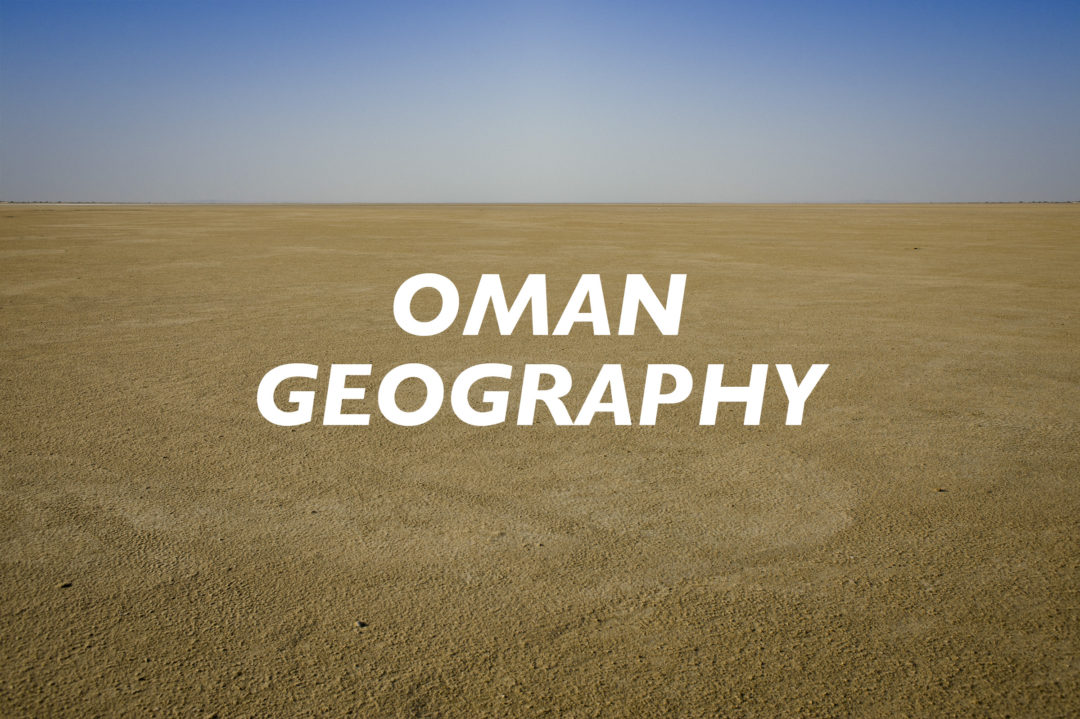Located on the  southeastern Arabian Peninsula just east of the Rub al Khali (Empty Quarter), Oman stands as the peninsula’s second largest country by land mass with 309,500 square kilometers. Oman is flanked by the nations of the United Arab Emirates to the north-west, Saudi Arabia to the west, and Yemen to the south-west. With 2,092 km of coastline, access to the Gulf of Oman and the Arabian Sea is plentiful.
southeastern Arabian Peninsula just east of the Rub al Khali (Empty Quarter), Oman stands as the peninsula’s second largest country by land mass with 309,500 square kilometers. Oman is flanked by the nations of the United Arab Emirates to the north-west, Saudi Arabia to the west, and Yemen to the south-west. With 2,092 km of coastline, access to the Gulf of Oman and the Arabian Sea is plentiful.
Unique geographical regions include:
- The al Batinah coastal plain that fronts the Gulf of Oman and contains most of Oman’s population in the north.
- The Interior including the al Hajar Mountains which provides water to agriculture in the area as well as to the al Batinah coast.
- The sparsely populated hilly coastal area stretching from Ras al Hadd down to the Dhofar Governate, featuring rich fishing grounds.
- The mountainous Dhofar Governate in the south that is home to fertile agricultural and livestock lands, and the annual monsoonal fog.
- The central flat lands containing salt basins where most of Oman’s hydrocarbon reservoirs are found.
Climate
Oman is hot and dry most of the year, making much of the year quite miserable if you don’t like hot weather. Luckily, the winter in Oman is mild and beautiful.
Summer starts around April and continues through October and temperatures can reach above 50 ℃ (122 ℉), however, officially you will never find a report of more than 49 ℃. Winter average daily mean temperatures are around 22 ℃ (71.6 ℉), making winter the clear choice for visiting. During winter storms snow has been known to fall on the peaks of Jebal Shams and Jebal Akhdar (about 3,000 m), making quite a contrast to summer highs.
Precipitation varies widely depending on the region, and the al Hajar Mountains make the precipitation very localized. Muscat sees little rainfall, and most often forecasted rain skirts around Muscat altogether. The al Hajar Mountains will see 460 mm (18.11 in) on average per year, compared to Muscat receiving 100 mm (3.95 in) on average per year.
Oman has a special climate period in the south Dhofar Governate. The mountains around the city of Salalah receive a monsoonal flow from June to September, called the Khareef, which soaks the area in wet fog transforming the mountains from brown to a lush tropical green.

